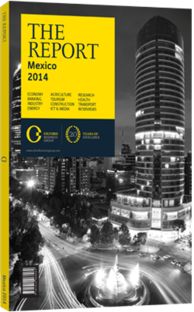Tourist hub: Medical tourism continues to expand, attracting 1m visitors in 2013
Attracting 1m medical tourists in 2013, Mexico has claimed the number two spot in the global medical tourism industry, behind only Thailand (1.2m). According to the Ministry of Tourism (Secretaría de Turismo, SECTUR), the industry reached $2.84bn in revenues, prompting the current administration to define a strategy to improve the country’s international competitiveness. With advantages including proximity to the US, attractive prices and coherent government strategy, the segment is set for continued growth.
EXPANSION: The medical tourism industry has been expanding consistently since 2006, when it was valued at $1.55bn. In 2013 industry revenues reached $2.84bn, up from $2.58bn in 2012. According to SECTUR, the segment is expected to post annual growth rates of around 7% over the next three years. The past few years have seen the industry expand from mainly dental services in border states to more complex procedures in a number of states across Mexico.
According to ProMéxico, Mexico has become the favoured destination for US citizens seeking cosmetic and dental surgery outside the US. Depending on the procedure, medical services in Mexico can be anywhere from 36-89% less expensive than in the US, according to the Medical Tourism Association. The most sought-after procedures include cosmetic and reconstructive surgery, dentistry and bariatric surgery.
Growth in medical tourism has also been fuelled by the countrywide expansion of medical infrastructure. In recent years, the expansion of private hospital chains has widened the offer of services in different locations throughout Mexico. Moreover, the Ministry of Health now has a certification system, establishing which facilities can perform surgery. Currently, 122 hospitals are certified by the ministry, mainly in Nuevo León, Baja California, Baja California Sur, Sonora, Tamaulipas, Chihuahua, Jalisco, Quintana Roo and Yucatán. According to ProMéxico, there are also ten specialised clinics now accredited by the Joint Commission International. With more than 71,000 specialists, Mexico boasts a high ratio of specialist doctors to general practitioners (63.4%), higher than the OECD’s average of 57.7%.
VARIOUS CITIES: Medical tourism has been growing in cities such as Mexicali, Puerto Vallarta and Cancún, which combine the attractiveness of competitive prices with beaches. Mexicali, Baja California, which hosted the Global Forum on Medical Tourism in 2012 and the 4th Medical Tourism Business Summit in October 2013, grossed revenues surpassing $16m from more than 155,000 medical tourists in 2010, according to PwC Mé xico. The city, which has now made medical care its primary tourist attraction, opened a medical fast lane in April 2012 to facilitate the return of patients to the US. Baja California is already home to four clusters in the medical tourism industry.
Puerto Vallarta has also experienced significant growth in cosmetic and reconstructive surgery, while Cancún is attracting a growing number of tourists seeking bariatric surgery and dental care. Arturo Méndez, tourism associate at PwC México, told OBG, “Health tourism is growing but has not been developed to its full potential. We have the necessary specialisation. Mexico City in particular is increasingly gaining prominence in the field of organ transplants, with more and more transplants being done successfully. We need to promote the industry better.”
SECTOR POTENTIAL: Recognising the sector’s potential, SECTUR has designed a comprehensive health tourism industry strategy that seeks to strengthen Mexico’s image as a service provider, generate an information knowledge system to obtain reliable data, and measure the flow of medical tourists as well as the industry’s economic impact.
Efforts to attract a higher share of health tourists should see advances in the streamlining of operations between Mexican health facilities and international insurance providers over the next few years. Indeed, a range of international insurance companies already have dealing with Mexican hospitals, including Aetna, Allianz, Unicare, UnitedHealth and CoventryHealthCare.
You have reached the limit of premium articles you can view for free.
Choose from the options below to purchase print or digital editions of our Reports. You can also purchase a website subscription giving you unlimited access to all of our Reports online for 12 months.
If you have already purchased this Report or have a website subscription, please login to continue.

